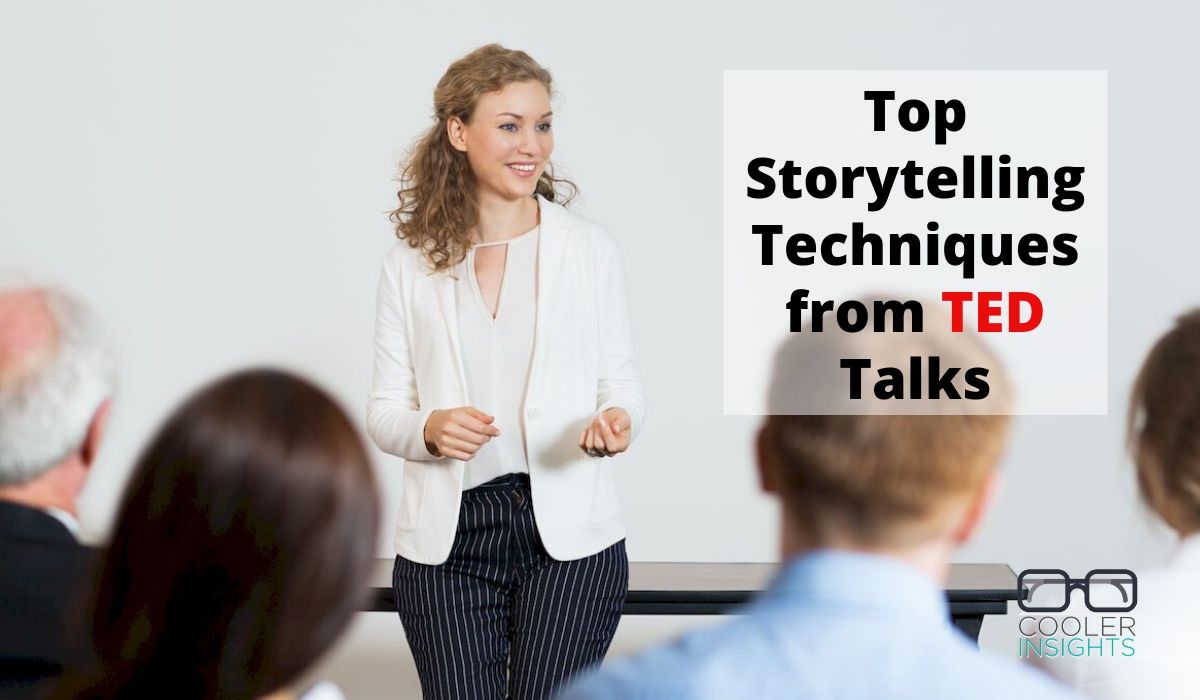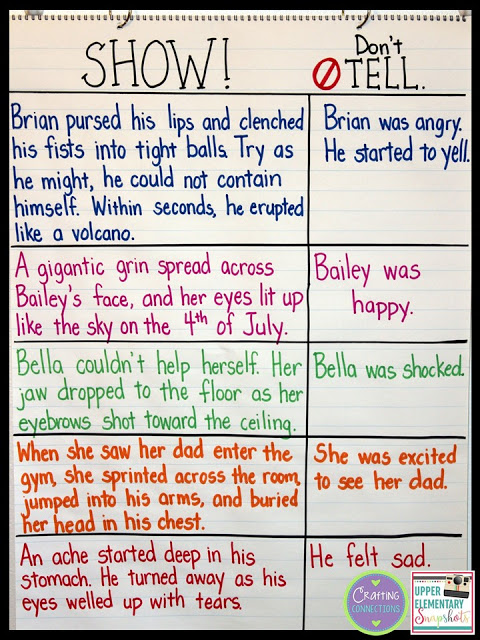
Business photo created by katemangostar – www.freepik.com
Do you love watching TED Talks? I sure do!
Some of the most inspiring TED Talks I watched came from thought leaders like Brene Brown, Sir Ken Robinson, and Shawn Achor, among others.
The one thing which many TED Talk speakers do well in—what you can consider as their ‘magic ingredient—is storytelling. Regaling the audience with tales of triumph, tragedy, trauma or tomfoolery, these august speakers could capture our attention over 18 minutes (or less).
Thanks to the book TED Talks Storytelling by public speaking expert Akash Karia, I learned a couple of the top storytelling techniques used in some of the most popular TED Talks.
While the book was written primarily for public speakers, I found that these TED Talk storytelling principles work equally well in content or social media marketing.
Wish to tell better stories like the most popular TED Talk speakers? Read on!
Start with a Story
To hook your content marketing audiences—be they online or offline—you should start with a story. This is especially critical in the first 10 to 15 seconds of your video, text, audio (for podcast), or speech.
Introductory remarks are boring, while stories are powerful because people are hardwired to listen to stories.
Stories can also take your audience on a mental journey. They function like a portal opening up your world to your audience, and affords them the ephemeral pleasure of escapism.
Share Personal Stories
First-person vignettes and anecdotes are the most powerful form of storytelling content.
They give the audience ‘new material’ which they haven’t read or heard before. They also allow you to showcase the depth and breadth of your emotions—especially on videos.
Personal stories are more believable than fictitious fables, and they help to elicit greater empathy from your audience. They can also help you to build your personal brand.
Chronicle Your Conflicts
Watch this talk highlighted in the book—it features the somewhat graphic experience of domestic violence victim (and survivor) Leslie Morgan Steiner.
Yes, it is gritty. You probably wouldn’t want to go through what she did.
But what works in making this presentation irresistible is conflict. In fact, the stronger the conflict, the more captivating a story would be.
(This was why Avengers End Game became the top performing superhero movie of all time—we’re talking about inter-galactic conflict here!)
Ask yourself these questions:
- Is the conflict level in my story strong enough?
- Does it stir the emotions of my audience?
- What is at stake in my story—will my audience care enough to root for me?
Bring Characters to Life with Details
Malcolm Gladwell is one of my favourite authors. I read and wrote a couple of book reviews on his books like David and Goliath, Outliers, What The Dog Saw, and The Tipping Point.
What Gladwell does very well in both his books and his presentations is his ability to bring his characters to life.
He does this by providing rich descriptions about the way they look, as well as sensory information that gives readers a mental image of his characters. These facts and figures help to embellish his story and make them come alive.
See how he describes both David and Goliath in this talk here:
(Learn more about character building from Malcolm Gladwell here.)
Show not Tell
Rather than tell people what your character is (“a hot-tempered young man”), you should use rich descriptions to show who they are (“red-faced with a perpetual snarl on his lips”).
Here are some examples of vivid descriptions of characters comparing the Show vs Tell technique of storytelling.

Courtesy of Upper Elementary Snapshots
Paint Mental Motion Pictures with the Senses
To further enrich your prose or presentation, consider engaging the five senses of your audience—sight, sound, touch, smell, and taste.
Providing descriptions that use as many of these senses as possible can help your audience to develop a mental motion picture of your characters and your stories.
These are also known as the VAKOG senses:
- Visual—What can you see?
- Auditory—What can you hear?
- Kinesthetic—What can you feel—either physically or emotionally?
- Olfactory—What could you smell?
- Gustatory—What could you taste?
Here’s an example of a rich descriptive phrase using these sensory writing techniques:
“5.30 am. The “beep-beep-beep” of the sombre blue digital clock jolted him awake. Crumpled blankets tossed aside, he stretches his arm to tap the clock off. A whiff of fresh coffee caught his nose as rays of autumn sun caught the swirling motes of dust in the room…”
(Learn more about sensory writing here.)
Specific Details Add Credibility
An age-old storytelling trick, adding specific details to your stories make them more believable. These details can also help to provide the right context to your audience.
Where possible, flesh out details like your character’s name, physical appearance, familial status, age, dates, places, and events.
You can also add these facts and figures to your own personal stories to make them resonate more soundly with your audience.
Focus on Positive Stories
While there is a time and place for negative stories (ie “what not to do”), telling positive stories generally work better. This is because positive-message stories are inspiring and they leave your audiences on an emotional high.
Here’s an example of a positive rags-to-riches story featuring China’s Billionaire Jack Ma:
Balance Dialogue with Narration
Wherever possible, try to include the actual dialogue among your characters in the story. This would work better than just describing the scene.
Dialogues helps to pull audiences directly into the scene. It helps them to hear exactly what was said and to be present at the actual scene of the action.
Dialogue is also shorter and punchier than narration, and allows you (in a video) to inject emotion and vocal variety to your delivery.
Here’s one of the best dialogues ever written in movie history — well at least for geeks like me!
Spark, Change and Takeaway
This three-in-one technique is a useful method to include in your storytelling efforts, and it goes like this:
- The Spark: This is the turning point in your story. It is the wisdom or process that the character in your story encounters in order to overcome a conflict.
- The Change: The best stories show a transformation in your characters after they’ve overcome the conflict. This can be due to a change in their personality or their circumstances.
- The Takeaway: This is the moral of the story. It is the take home message that you want your audiences to have, and could include a call-to-action (CTA) if you wish.
An Ideal Storytelling Structure
Using the above elements, the following storytelling structure for TED Talks is proposed by Karia.
Character ➜ Conflict ➜ Spark ➜ Change in Character ➜ Takeaway Message
Note that the sequence may not always be in this direction (for example, the story could start in the middle of a conflict or a spark). However, it should roughly contain the following elements.
Perhaps the best example of this storytelling structure in play can be seen in Steve Jobs iconic address in Stanford University in 2005.
Ask yourself the following questions as your watch the video:
- Characters: Who were the characters in Steve Jobs’ story?
- Conflict: What were some of the conflicts and challenges which Steve Jobs faced at work and in his life?
- Spark: What were some of the transformative incidents which turned Steve Jobs life around?
- Change in Character: How did his different life encounters—both trials and triumphs—result in a change in Steve Jobs?
- Takeaway Message: What were some of the takeaway messages which Steve Jobs imparted to his audience?
Conclusion
Short and succinctly written yet containing gems of wisdom, TED Talks Storytelling provides lots of useful tips and techniques in storytelling.
By applying the above principles, you’ll be better able to craft a compelling story regardless of your medium and format.
Which of these techniques do you find most useful? How would you apply it to your content marketing efforts?

Fine way of telling, and pleasant post. Nice info! Thanks a lot for sharing it, that’s truly has added a lot to our knowledge about this topic. Have a more successful day. Amazing write-up, always find something interesting.
Thanks